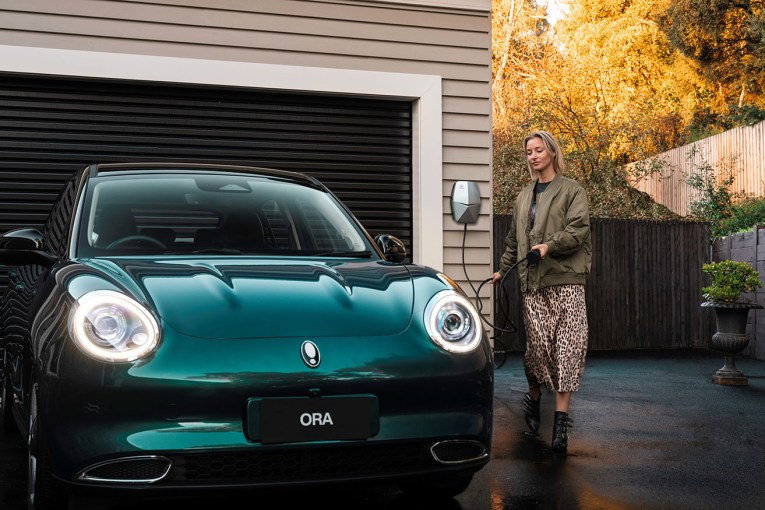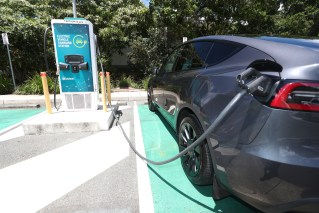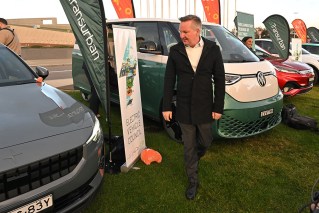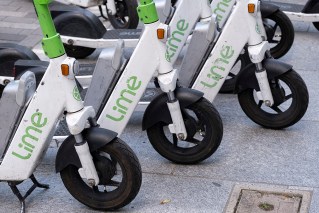Renault’s Kadjar is the SUV that deserves a chance

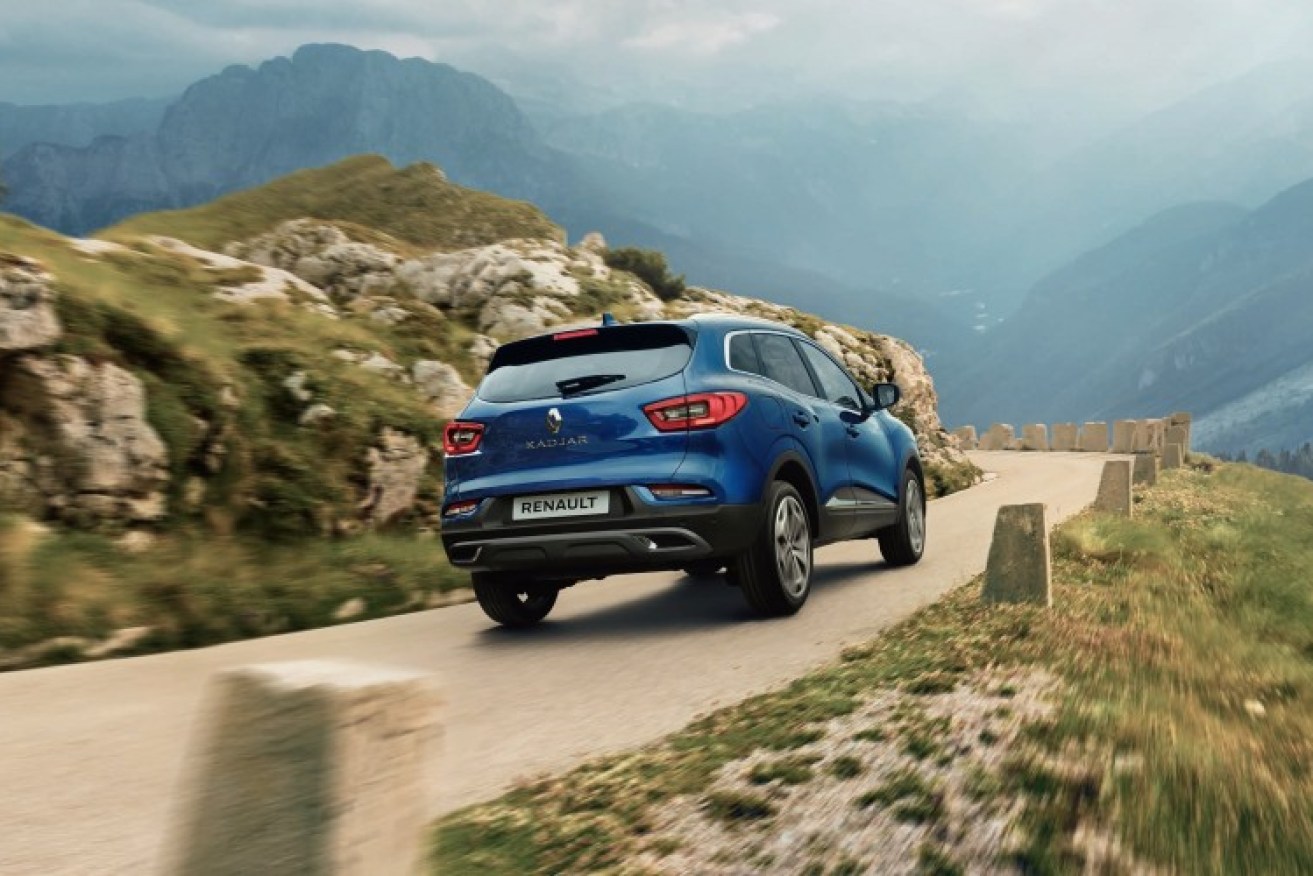
The Renault Kadjar comes to the market with the shiny new star power of F1 driver Daniel Ricciardo. Photo: Renault
You’ve probably noticed Aussie Formula One hero Daniel Ricciardo has changed teams to Renault this year.
The Honey Badger’s famous grin has looked a little strained at times as his car has failed, been penalised or simply not been competitive.
Hey, it’s not all been bad, of course, and there’s no doubt it has all served to raise the public profile of the French brand in Australia, at a time when it’s trying to kickstart its local presence with a bunch of new models.
One of the first to launch is the Kadjar, a medium-sized five-seat SUV.
What is it?
The Kadjar is aimed directly at the likes of the Mazda CX-5 and Toyota RAV4, which are the big sellers in this segment.
Deconstruct this vehicle a little bit and you’ll find a classic example of the interdependence of the modern automotive industry.
It is based on the same platform as alliance partner Nissan’s Qashqai SUV, while its 1.3-litre turbo-petrol four-cylinder engine emerges from a technology deal with Mercedes-Benz.
The interior and exterior design – the bits you interact with – are Renault’s work.
The 117kW/260Nm engine sounds tiny, but delivers roughly equivalent performance to an orthodox 2.0-litre engine. Renault claims a 6.3L/100km fuel consumption average.
A seven-speed dual clutch gearbox drives only the front wheels, which means Kadjar is a raised station wagon rather than true off-roader.
The Kadjar is 4449mm long, 1836mm wide and 1607mm high. It has a luggage capacity of 408 litres, expanding to 1478 litres with the rear seat folded.
Compared to the top-selling CX-5, the Renault is slightly shorter, narrower and lower. It has less luggage space with the seats up and more with them down.
Why is it important?
Australians buy more medium SUVs than any other type of vehicle – any SUV, any passenger car, any ute.
So the Kadjar is very important. It sits between the smaller Captur and larger Koleos and gives Renault a solid SUV line-up.
How much does the Renault Kadjar cost?
There are three Kadjar grades; the $29,990 (plus on-road costs) Life, the $32,990 Zen and the $37,990 Intens (no ‘e’ on the end). Renault expects the upper two models to be the big sellers.
By comparison, the CX-5 front-wheel drive 2.0-litre petrol line-up starts at $30,880 as a manual and tops out at $36,090, then you’re into the all-wheel drive models.
The new Toyota RAV4 starts at $30,990 and rises as far as $39,490 (before ORCs) as a 2.0 front-driver.
So the Renault is definitely in the pricing ballpark.
The only Kadjar options are metallic paint for $750 – white is the only non-metallic among six exterior colour choices – and a fixed panoramic glass sunroof and auto-dimming rear-view mirror for the Zen, worth $1000.

Renault launches into the medium SUV market with the Kadjar. Photo: Renault
What does the Renault Kadjar get?
It’s worth noting that while Kadjar is new to Australia it has been around four years overseas. We’re getting the first major facelift, which, critically, adds the 1.3-litre engine, as well as a 7.0-inch touchscreen with Apple and Android connectivity, redesigned seats with double density foam, air vents for the rear seat passengers and two USB ports.
So, safety first. Every Kadjar comes with six airbags, only low-speed autonomous emergency braking, a reversing camera, front and rear parking sensors and tyre pressure monitoring. There are two Isofix child-seat mounting points. The Kadjar does not have an ANCAP safety rating.
Life standard equipment includes dual-zone climate control, a customisable digital instrument panel and a cloth interior. The Zen adds side parking sensors, lane departure warning, blind spot monitoring, hands-free entry with push button start, leatherette (artificial cow) trim and two-tone alloys.
The Intens comes with LED headlights, auto parking, a BOSE premium audio system, fixed glass panoramic roof, black leather-trimmed upholstery, heated and power adjustable front seats and larger 19-inch alloy wheels.

Lane departure warning on board the Zens. Photo: Renault
All Kadjars come with a space-saver spare tyre, but a power tailgate seems an obvious miss these days.
Renault protects the Kadjar with a new customer service program called 5:5:5 Easy Life.
It combines a five unlimited warranty with five-years/150,000km capped price servicing and up to five-years roadside assistance.
The servicing schedule is 12 months or 30,000km and over five years would add up to $2385. The CX-5 has service intervals every 12 months or 10,000km. So if you rack up more kilometres you’re going to be back at your Mazda dealer more often.
What do we like?
For a start, the price of entry to the Kadjar is pretty appealing, as is the servicing program.
The size of the Kadjar means you’re not going to struggle to fit adult-behind-adult, nor a decent amount of luggage in the boot. You’re also going to sit comfortable in the cabin as the seats are supportive – especially up-front.
Noise well-quelled inside. There’s some gargling from the engine under revs, while the Intens generates a bit of road roar on its 19-inch tyres. But it’s not outlandish.
Yet for all its load-carrying capacity, the Kadjar doesn’t overwhelm the engine. In fact, being turbocharged, it generates significantly more torque – or pulling power – than the Mazda or Toyota 2.0s.

“Yep, that’s a roomy interior.” Photo: Renault
The Kadjar also behaves quite decently – hey, it’s not going to get Daniel Ricciardo excited – but its light steering is great for shopping centres and it’s accurate enough out on the opening road too.
There’s a compliance to the ride that marks the Kadjar apart from the Mazda CX-5, or the Volkswagen Tiguan. It rolls a bit more and feels more about comfort than speed. That applies more to the Life and Zen rolling on less aggressive 17-inch rubber.
What we don’t like
Small turbo engines do tend to take a bit of stirring and dual-clutch gearboxes can be indecisive at times. Combine these two, as Kadjar does, and prepare for some hesitations.
It really only happens when the engine is spinning at low revs, the turbo hasn’t got huffing and when the gearbox has to make a call on what gear to select next. Once you’re up and going the problem evaporates.
On big bumps and holes the Kadjar’s unsophisticated suspension system gets exposed. There’s some jolts and bangs that are a bit unedifying.
Speaking of noises, over the course of driving three or four Kadjars a creak from the centre console was noted in two of them. Quite annoying and not a great vote of confidence for quality – the Kadjar is built in Spain, by the way.
Interior surfaces are hard to the touch and the position and size of the touchscreen in the dashboard – rather than being bigger and positioned higher – speaks to how long this vehicle has actually been around.
Buy it or not?
The Kadjar is merely competent to drive, is arriving in Australia well into its lifespan and our experience suggests some niggling build issues.
On top of that, Renault simply lacks the recognition and confidence local buyers have in Mazda and Toyota and the like.
On the flipside the price is right, the back-up is comprehensive and you’re driving the same brand of vehicle as one of Australia’s most likeable sporting superstars.
Hey, Dan took the leap of faith, maybe you can too.

